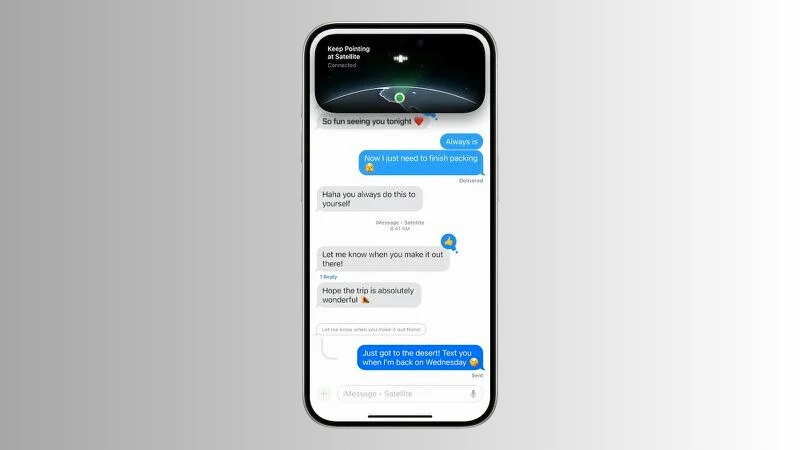As we look towards an increasingly connected future, Apple pushes the boundaries of connectivity by announcing a revolutionary new feature in iOS 18: messaging without Wi-Fi or cell service. This new feature is expected to disrupt the communication world, especially in places where conventional networks just have no reach.
Satellite messaging power🚀
You are traveling off the grid, hiking a mountain or sailing on an otherworldly lake and as soon as you lose Wi-Fi or cellular service, your phone is nothing more than a smartphone brick. As of iOS 18, that scenario is slowly changing. Satellite technology allows to send text messages and keep the user in touch, even in very remote locations. It is a huge advantage to the adventurers and those who teaches or works farm living people since emergency comes from no mistake.
How Does It Work?
Read Also: Should I Really Buy the iPhone SE 4? What Apple Doesn’t Tell You!
So, how does this work? If an area has no cellular or Wi-Fi service, your iPhone will reinsure you that it will send the message via satellite. This is integrated in the Messages app, so you can send plain text or emojis back and even use Tapbacks as with regular messages. For this to work properly, the sender and receiver must have iOS 18 on their devices. But if the receiver has not updated then the satellite messaging will automatically switch over to SMS providing acknowledgment that even though they may be stuck in an airport without connection, your critical message did not disappear into nowhere.
Who Can Use It?

Satellite messaging is now only available on iPhone 14 and newer. All of that is a pretty move, but it does have limitations. This service is currently available in the U.S. and Canada only. It may sound limiting, anyway, Apple is undoubtedly going to perform this innovation in other items and extend its accessibility later on for general arrival.
What Are the Implications?
Sending messages while not having Wi-Fi available is not only a matter of convenience, it raises questions about our connection to technology in our everyday life. Will this make us less dependent on normal mobile networks because if you think about it when we are sitting in our homes with wifi or more likely 5G your phones can still call and text but they have to go through the network. With technology still speeding along, there probably never will be an end to how we can connect and share together. If nothing else, this could be a sort of prototype that other tech companies realize they could do and start doing the same thing — meaning innovation in smart home features could be driven across the industry.
While undoubtedly an exciting feature, it is also one that could lead to some criticism around potential restrictions and the ongoing costs of satellite infrastructure. Can Apple support this technology for the long term? But what about those users who are not on latest devices? In most cases, by the time you finish the transcript of a full conversation you should have considered pros and cons.
Final Thoughts
To sum it up, Apple truly has made some huge advancements in the world of mobile technology by introducing the ability to send messages without Wi-Fi. While increasing communication in rural areas, it also seeks to do a better job at keeping emergency services safe. David: As we celebrate these advancements, it is essential to be conscious of their lacks and the ever-changing connectivity paradigms. But there can be no doubt that, iOS 18 is forging a new pattern of communication.

